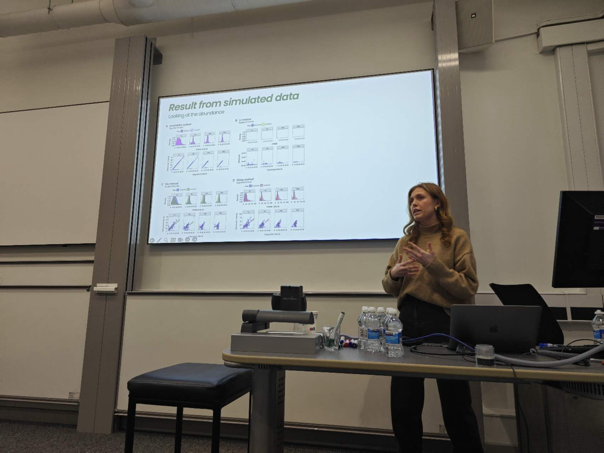In this case study we hear from Katie Jeynes-Cupper, a PhD student in Biosciences, who has been using BlueBEAR to unravel genome plasticity in plants. She was the winner of the best presentation at our recent BEAR Conference 2024.

From food security to biofuel production, the demand for plant-derived products is growing exponentially, in parallel with the rising human population. However, experts predict that by 2050, the increase in crop yields will not be sufficient to meet this demand, potentially leading to a significant shortfall in crops necessary for ensuring food security (Food and Organization 2013, Ray, Mueller et al. 2013, Jeynes-Cupper and Catoni 2023). And indeed, currently millions of people around the world already face food poverty, highlighting the urgent need to address food security issues faced now and in the future.
The study of plants does not only have a direct implication on food security, but can help to address important biological questions. Historically, there have been many important discoveries made in plants, that have been often initially overlooked, yet these discoveries have marked fundamental advances in our knowledge. Among these we might include the discovery of viruses, RNA interfering, and transposable elements. Moreover, due to their sessile nature, plants are forced to adapt in response to change in their environment, hence, advancement in the study of plant genomes has uncovered key mechanisms of adaptation and evolution.
The BlueBEAR High-Performance Computing (HPC) cluster at the University of Birmingham has been central to undertaking my research in the Catoni Research Group
The main objectives of the Catoni Research Group is to study genome plasticity – an organism’s ability to make alterations to their genetic material to allow for evolutionary flexibility, variability and adaption to improve survival – in plants. This research strives to understand the underpinning genetic and epigenetic molecular mechanisms driving plant traits and their evolution, ultimately to allow us to leverage these mechanisms to support crop breeding efforts. This work requires the interplay of greenhouse and laboratory experiments alongside computational analysis using next-generation sequencing data, and computational modelling. This has led to the development of several open-source analysis tools, including DMRcaller that computes differentially methylated regions between two conditions, PackFinder that annotates and analyses Pack-TYPE transposons, and mobileRNA that efficiently analyses RNA expression from multiple genomes.

Within the group, my research has been focused on understanding whether the mobilisation of RNAs is linked to the observed phenotypic and physiologic changes in crops. By understanding the coordination of genetic and epigenetic regulation of grafting-induced crop vigour, we strive to identify whether these mechanisms were altering photosynthetic parameters and whether they could be leveraged to support crop breeding efforts.
The BlueBEAR High-Performance Computing (HPC) cluster at the University of Birmingham has been central to undertaking my research in the Catoni Research Group. The available computational power has allowed me to handle vast quantities of genomic information. In addition, the HPC resources have allowed me to assess and optimise the performance of NGS analysis pipelines under various conditions, which has allowed me to then wrap this pipeline into a handy open-source tool.
The available computational power has allowed me to handle vast quantities of genomic information
I would like to formally thank the BEAR group for organising the recent University-wide interdisciplinary BEAR conference on “High Performance Computing across Disciplines”. It was eye-opening to hear about how different researchers across the institute are utilising HPCs in their research.
We were so pleased to hear of how Katie was able to make use of what is on offer from Advanced Research Computing, particularly to hear of how she has made use of BlueBEAR HPC and its many cores – if you have any examples of how it has helped your research then do get in contact with us at bearinfo@contacts.bham.ac.uk. We are always looking for good examples of use of High Performance Computing to nominate for HPC Wire Awards – see our recent winners for more details.
References
Food and A. Organization (2013). FAOSTAT, Food and Agriculture Organization of the United Nations, FAO Rome, Italy.
Jeynes-Cupper, K. and M. Catoni (2023). “Long distance signalling and epigenetic changes in crop grafting.” Frontiers in Plant Science 14: 1121704.
Ray, D. K., N. D. Mueller, P. C. West and J. A. Foley (2013). “Yield trends are insufficient to double global crop production by 2050.” PloS one 8(6): e66428.
